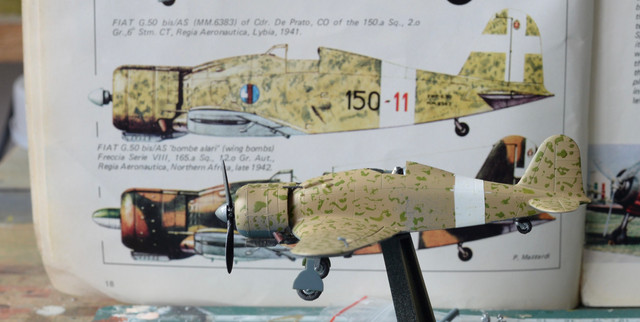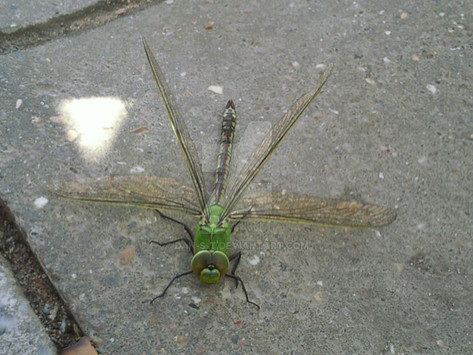HOME | DD
 bagera3005 — BAE Hawk Red Arrows
by-nc-nd
bagera3005 — BAE Hawk Red Arrows
by-nc-nd

Published: 2008-08-27 06:42:24 +0000 UTC; Views: 4639; Favourites: 19; Downloads: 212
Redirect to original
Description
The Red Arrows, officially known as the Royal Air Force Aerobatic Team, is the aerobatics display team of the Royal Air Force, based at RAF Scampton, Lincolnshire, England (soon to be RAF Waddington). They were formed in late 1964 as an all-RAF team, replacing a number of unofficial teams that had been sponsored by various RAF commands.The Red Arrows badge shows the aircraft in their trademark diamond nine formation, with the motto Éclat, meaning "brilliance" or "excellence".
The Red Arrows were equipped with seven Folland Gnat trainers which were inherited from the RAF Yellowjacks display team. This aircraft was chosen because it was less expensive to operate than front-line fighters. In their first season, they flew at 65 shows across Europe. In 1966, the team was increased to nine members, enabling them to develop their Diamond Nine formation. In late 1979, they switched to the BAE Hawk trainer. The Red Arrows have now performed over 4,000 displays world-wide in 53 countries.[1]
Predecessors
The Red Arrows were not the first RAF aerobatics team. An RAF biplane pageant was held at Hendon in 1920 with biplane teams made up of Gauntlets and Gladiators from front-line squadrons. In 1938, three Gladiators flew with their wing-tips tied together. The Second World War largely stopped formation aerobatics, as planes were needed elsewhere.
In 1947, the first jet team of three Vampires came from Odiham Fighter Wing. Various teams flew the Vampire, and in 1950, No. 72 Squadron was flying a team of seven. No. 54 Squadron RAF became the first RAF jet formation team to use smoke trails. Vampires were replaced by Meteors, No 66 Squadron developing a formation team of six aircraft. Hunter aircraft were first used for aerobatics teams in 1955, when No 54 Squadron flew a formation of four.
The official RAF team was provided by No. 111 Squadron RAF ('Treblers' or 'Treble-One'




 in 1956, and for the first time the aircraft had a special colour scheme, which was an all-black finish. After a demonstration in France, they were hailed as 'Les Fleches Noires' and from then on known as The Black Arrows. This team became the first team to fly a five-Hunter formation. The Black Arrows' greatest moment was the loop and barrel roll of 22 Hunters during the 1958 Farnborough Airshow. This was a world record for the greatest number of aircraft looped in formation, and remains unbroken to this day. The Black Arrows were the premier team until 1961, when The Blue Diamonds (No. 92 Squadron RAF) continued their role, flying sixteen blue Hunters.
in 1956, and for the first time the aircraft had a special colour scheme, which was an all-black finish. After a demonstration in France, they were hailed as 'Les Fleches Noires' and from then on known as The Black Arrows. This team became the first team to fly a five-Hunter formation. The Black Arrows' greatest moment was the loop and barrel roll of 22 Hunters during the 1958 Farnborough Airshow. This was a world record for the greatest number of aircraft looped in formation, and remains unbroken to this day. The Black Arrows were the premier team until 1961, when The Blue Diamonds (No. 92 Squadron RAF) continued their role, flying sixteen blue Hunters.All ten Red Arrows Hawks line up ready for the display.
All ten Red Arrows Hawks line up ready for the display.
In 1960, The Tigers (No. 74 Squadron RAF) were re-equipped with Lightnings and performed wing-overs and rolls with nine aircraft in tight formation. They sometimes gave co-ordinated displays with the Blue Diamonds.
Yet another aerobatics team was formed by No. 56 Squadron RAF, The Firebirds, with nine red and silver Lightnings. In 1964, The Red Pelicans, flying six Jet Provost T Mk 4s, assumed the role of the RAF's leading display team. In that same year, a team of five yellow Gnat trainers from No 4 Flying Training School displayed at the Farnborough Airshow. This team became known as the Yellowjacks after Flight Lieutenant Lee Jones's call sign, "Yellowjack"; the name was briefly 'Daffodil Patrol', but was quickly changed back.
In 1964, it was decided to amalgamate all the RAF display teams, as it was feared pilots were spending too much time practising formation aerobatics rather than operational training. The new team name took the word red from the fact that the Yellowjacks' planes had been painted red (as it was a far clearer and visible colour in the sky for safety reasons) and arrows after the Black Arrows; however some think red was a tribute to the Red Pelicans. Another reason for the change to red is that responsibility for the team moved from Fighter Command to the Central Flying School, whose main colour was red.
[edit] The Red Arrows
A Red Arrows pilot exits his Hawk aircraft at the end of the display
A Red Arrows pilot exits his Hawk aircraft at the end of the display
The Red Arrows escort Concorde at the Queen's Golden Jubilee flyover of London
The Red Arrows escort Concorde at the Queen's Golden Jubilee flyover of London
The Royal Air Force Aerobatic Team, the Red Arrows, was based at RAF Kemble, then a satellite unit of the Central Flying School, itself based at RAF Little Rissington, which was considered the "official" home base of the Arrows. Arrows' aircraft would frequently fly into Rissington for maintenance. When RAF Scampton became the CFS Headquarters in 1983, the Red Arrows moved there. As an economy measure, Scampton closed in 1995, so the Red Arrows moved just twenty miles to RAF Cranwell; however, as they still used the air space above Scampton, the emergency facilities and runways had to be maintained. Since December 21, 2000, the Red Arrows have been based again at RAF Scampton, near Lincoln.
The first team, led by Squadron Leader Lee Jones, had seven display pilots and flew the Folland Gnat T1 jet trainer. The first display in the UK was on 6 May 1965 at Little Rissington for a press day. At the subsequent National Air Day display, three days later, at Clermont Ferrand in France, one French journalist described the team as "Les Fleches Rouge", confirming the name "The Red Arrows". By the end of their first season, the Red Arrows had displayed 65 times in Britain, France, Italy, Holland, Germany and Belgium and were awarded the Britannia Trophy by the Royal Aero Club for their contribution to aviation.
In 1968, the then Team Leader (Sqn. Ldr. Ray Hanna AFC) expanded the team from seven to nine jets, as he wanted to expand the team's capabilities and the permutations of formation patterns. It was during this season that the 'Diamond Nine' pattern was formed and it has remained the team's trademark pattern ever since. Ray Hanna stayed as Red Leader for four consecutive years until 1969, a record as Leader which still stands to this day. For his considerable achievements of airmanship with the team, Ray Hanna was awarded a bar to his existing Air Force Cross (AFC).
After displaying 1,292 times in the Folland Gnat, the Red Arrows took delivery of the Hawk trainer in the winter of 1979. Since being introduced into service with the Red Arrows, the Hawk has performed with the Red Arrows in fifty countries.
On the 9 September 2003, a Red Arrow jet veered off the runway at Jersey airport. The pilot, Flight Lieutenant Jez Griggs, ran the jet into a gravel pile and little damage was caused. No one was injured. Displays were not affected because the Red Arrows take a spare aircraft with them.[2]
In July 2004 there was speculation in the British media[3] that the Red Arrows would be disbanded, after a defence spending review, due to running costs of between £5 million and £6 million. The Arrows were not disbanded and the expense has been justified through the public relations value of the arrows, because the Red Arrows help develop business in the defence industry and also because they act as a recruitment mechanism for the RAF. According to the BBC, it is highly unlikely that the Red Arrows will be disbanded, as they are a considerable attraction throughout the world. This was reiterated by then Prime Minister, Tony Blair, in 2007.[4]
With the planned disposal of RAF Scampton the future home of the Red Arrows was uncertain. A move to either RAF Waddington, in Lincolnshire, or RAF Leeming, in North Yorkshire, before the end of the decade is possible.[5] On 20th May 2008 months of speculation was ended when it was revealed that the Ministry of Defence were moving the Red Arrows to nearby RAF Waddington. [6]
[edit] Pilots
The pilots of the Red Arrows line up for an official photo after their display
The pilots of the Red Arrows line up for an official photo after their display
Since 1966, there have been nine display pilots each year, all volunteers. Pilots must have completed one or more operational tours on a fast jet such as the Tornado, Harrier or Jaguar, have accumulated at least 1,500 flying hours and have been assessed as above average in their operational role to be eligible. Even then, there are more than ten applicants for each place on the team.[7] Pilots stay with the Red Arrows for a three-year tour of duty. Three pilots are changed every year, such that there are always three first year pilots, three second year pilots, and three in their final year.
The Red Arrows have no reserve pilots, as a spare pilot would not perform often enough to fly to the standard required. If one of the pilots is not able to fly, the team flies an eight-plane formation. However, if the Team Leader, 'Red 1', is unable to fly then the team does not display at all. Each pilot always flies the same position in a formation. The pilots spend six months from October to April practising for the coming display season.
During an aerobatics display, Red Arrows pilots experience forces up to five times that of gravity, and when performing the aerobatic manoeuvre 'Vixen Break', forces up to 7g can be reached, close to the 8g structural limit of the aircraft.
As well as the nine pilots, 'Red 10', also known as the Road Manager, is a fully qualified Hawk pilot who flies the tenth aircraft when the Red Arrows are away from base. This means the team have a reserve aircraft at the display site. Red 10's duties include co-ordination of the display and acting as the team's Ground Safety Officer. Red 10 also flies TV cameramen and photographers for air-to-air pictures of the Red Arrows.[8]
Related content
Comments: 2

That is great! and my English buddy is happy to see this coz he's an retired Airforce
👍: 0 ⏩: 0






















